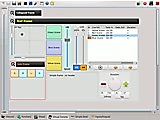
QLC+ is a tool to control DMX and analog lighting systems. It can
orchestrate moving heads, dimmers, scanners etc. It's a fork of QLC
with new features comparable to commercial control systems.
minor bugfix: New ture: beamZ MHL75 Hybrid Moving Head.
-- Massimo Callegari Sun, 30 Mar 2025 18:19:20 +0200.
 Apache c++ qt lighting light-systems control engineering
Apache c++ qt lighting light-systems control engineering

Gradle is an open-source build automation tool focused on flexibility and performance. Gradle build scripts are written using a Groovy or Kotlin DSL.
minor bugfix: Gradle 8.12.1 is the first patch release for Gradle 8.12.
It fixes the following issues:
#31245 FileLockCommunicator is not compatible with macOS 15.1 firewall and Crowdstrike/SentinelOne
#31942 Default working directory for ExecSpec changed between 8.11 and 8.12
#31946 Build failed on Linux after upgrading 8.11.1 - 8.12
#32016 Incorrect output format for Java compiler problems
We recommend users upgrade to 8.12.1 instead of 8.12.
 Apache build-tool c c++ groovy java kotlin
Apache build-tool c c++ groovy java kotlin

Qt Creator provides a cross-platform, complete integrated development environment (IDE) for application developers to create applications for multiple desktop, embedded, and mobile device platforms, such as Android and iOS. It is available for Linux, OS X and Windows operating systems.
minor feature: https://code.qt.io/cgit/qt-creator/qt-creator.git/about/dist/changelog/changes-15.0.1.md?h=15.0
 GNU GPLv3 software-development c++ qt cross-platform developers ide qml
GNU GPLv3 software-development c++ qt cross-platform developers ide qml

The LedgerSMB project provides small and mid-size businesses with solid open source accounting software: integrating invoicing, order processing, quotations and more (ERP). LedgerSMB aims to provide a strong (multi-currency accounting) basis to build your business on -- without vendor lock-in.
The project team considers correctness and performance equally important key usability features and is dedicated to providing both, even on the biggest data sets.
Sales (Invoices, Orders, Quotations)
Receivables & Payables
General ledger
Inventory management
Fixed asset accounting & depreciation
Profit & cost centers, departments, projects
Output documents in PDF, HTML, CSV, Office formats
Mail documents (e.g. invoices) from within the application
Translatable to your language (comes with 45 languages)
and more
The fact that LedgerSMB is open source
- meaning that the source code is freely available - makes it even more customizable and flexible.
minor bugfix: The LedgerSMB development team is happy to announce yet another new
version of its open source ERP and accounting application.
This release contains the following fixes and improvements:
Changelog for 1.12.2
* Fix warnings in 'ledgersmb-admin template' command (#8595)
* Fix pre-upgrade schema check feedback (#8606)
* Fix failure to post payment/receipt batches (#8610)
* Exclude buggy Workflow version 2.02 dependency (#8610)
For installation instructions and system requirements, see
https://github.com/ledgersmb/LedgerSMB/blob/1.12.2/README.md
The release can be downloaded from our download site at
https://download.ledgersmb.org/f/Releases/1.12.2
The release can be downloaded from GitHub at
https://github.com/ledgersmb/LedgerSMB/releases/tag/1.12.2
Or pulled from the GitHub Container Registry
docker pull ghcr.io/ledgersmb/ledgersmb:1.12.2
Or pulled from Docker Hub using the command
docker pull ledgersmb/ledgersmb:1.12.2
These are the sha256 checksums of the uploaded files:
a5c1b4aa780afcf6628f365f5e4c9c572fab8a40c6372b4b2ea8b1381b4b8145 ledgersmb-1.12.2.tar.gz
2351635d01db5dd571852994b281c0012654e5ad8036a731f5895592fcef4e70 ledgersmb-1.12.2.tar.gz.asc
 GNU GPL accounting invoicing orders erp perl postgresql bookkeeping web
GNU GPL accounting invoicing orders erp perl postgresql bookkeeping web

The LedgerSMB project provides small and mid-size businesses with solid open source accounting software: integrating invoicing, order processing, quotations and more (ERP). LedgerSMB aims to provide a strong (multi-currency accounting) basis to build your business on -- without vendor lock-in.
The project team considers correctness and performance equally important key usability features and is dedicated to providing both, even on the biggest data sets.
Sales (Invoices, Orders, Quotations)
Receivables & Payables
General ledger
Inventory management
Fixed asset accounting & depreciation
Profit & cost centers, departments, projects
Output documents in PDF, HTML, CSV, Office formats
Mail documents (e.g. invoices) from within the application
Translatable to your language (comes with 45 languages)
and more
The fact that LedgerSMB is open source
- meaning that the source code is freely available - makes it even more customizable and flexible.
minor bugfix: The LedgerSMB development team is happy to announce yet another new
version of its open source ERP and accounting application.
This release contains the following fixes and improvements:
Changelog for 1.11.21
* Exclude buggy Workflow version 2.02 dependency (#8610)
Changelog for 1.11.20
* Fix warnings in 'ledgersmb-admin template' command (#8595)
* Fix pre-upgrade schema check feedback, regressed in 1.11.17 (#8606)
Note: The container images for 1.11.20 were built with Workflow 2.02
which has a problematic bug which our code base triggers. Therefor
1.11.21 was immediately released to exclude this dependency version.
For installation instructions and system requirements, see
https://github.com/ledgersmb/LedgerSMB/blob/1.11.21/README.md
The release can be downloaded from our download site at
https://download.ledgersmb.org/f/Releases/1.11.21
The release can be downloaded from GitHub at
https://github.com/ledgersmb/LedgerSMB/releases/tag/1.11.21
Or pulled from the GitHub Container Registry
docker pull ghcr.io/ledgersmb/ledgersmb:1.11.21
Or pulled from Docker Hub using the command
docker pull ledgersmb/ledgersmb:1.11.21
These are the sha256 checksums of the uploaded files:
63462fb954c717c689c0e5d20fc7a754efe57ffff1050d34d3f3a26bf69374f3 ledgersmb-1.11.21.tar.gz
65910b87bd372dc58fcf5f79f1e7dffe48035a31060a5f57435c67dd37141241 ledgersmb-1.11.21.tar.gz.asc
 GNU GPL accounting invoicing orders erp perl postgresql bookkeeping web
GNU GPL accounting invoicing orders erp perl postgresql bookkeeping web
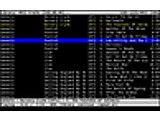
Siren is a text-based audio player for UNIX-like operating systems. Supported file formats include Ogg Vorbis, MP3, Opus, FLAC, AAC, WavPack, WAVE and AIFF. Playback is possible through sndio, PulseAudio, ALSA, OSS, Sun audio, PortAudio and libao. Siren is known to run on OpenBSD, NetBSD, FreeBSD, Linux and OS X.
minor feature: 5.
6 - Handle FFmpeg API changes.
7.
 ISC audio curses mp3 music ncurses player terminal text-based
ISC audio curses mp3 music ncurses player terminal text-based

Jenkins provides hundreds of plugins to support building, deploying and automating any project.
minor feature: lt;ul gt;.
lt;li gt;.
RFE:
Remove the ability to install as a Windows service from a running Jenkins install.
Users wanting this functionality should instead lt;a href="https://www.jenkins.io/download/" gt;download and install lt;/a gt; the MSI package.
lt;/li gt;.
lt;li gt;.
RFE:
Refresh the interface of Jenkins CLI page.
lt;/li gt;.
lt;li gt;.
RFE:
Use lt;code gt;oklch lt;/code gt; for the Jenkins UI.
lt;/li gt;.
lt;li gt;.
Use the correct date in the History widget when a user has configured a dedicated time zone.
lt;/li gt;.
lt;/ul gt;.
 MITL ci automation java
MITL ci automation java

vokoscreen is an easy to use screencast creator to record educational videos, live recordings of browser, installation, videoconferences, etc.
major feature: /li .
Formats: AVI and MOV removed because not suitable for recording.
Openh264enc: Change multi-thread to 0.
Wayland: Added separated audio tracks.
Wayland: Preparing the online help.
Translation: Updated.
.
.
 GNU GPL video capture screen-capture cpp linux education
GNU GPL video capture screen-capture cpp linux education
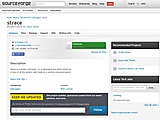
strace is a diagnostic, debugging and instructional userspace utility for Linux. It is used to monitor and tamper with interactions between processes and the Linux kernel, which include system calls, signal deliveries, and changes of process state. The operation of strace is made possible by the kernel feature known as ptrace.
minor feature: Noteworthy changes in strace 6.13 (2025-01-23) Improvements. Implemented decoding of getxattrat, setxattrat, listxattrat, and removexattrat syscalls. Updated decoding of struct io_uring_clone_buffers, struct io_uring_napi, and struct perf_event_attr. Updated decoding of crypto_user_alg netlink attributes of NETLINK_CRYPTO. Implemented decoding of IFLA_MCTP_PHYS_BINDING netlink attribute. Updated lists of AT_*, BPF_*, FAN_*, IORING_*, MADV_*, NT_*, and SCM_* constants. Updated lists of ioctl commands from Linux 6.13. Contributors. This release was made possible by the contributions of many people. The maintainers are grateful to everyone who has contributed changes or reports. These include: Andrea Bolognani. Dmitry V. Levin. Gleb Fotengauer-Malinovskiy. Please refer to the CREDITS file for the full list of strace contributors.
 GNU LGPL c debugger software-development linux diagnostic
GNU LGPL c debugger software-development linux diagnostic
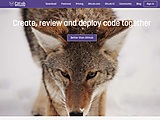
GitLab is a development collaboration tool and git DVCS frontend. It includes repository management features, code reviews, an issue tracker, activity feeds and wikis.
GitLab provides fine-grained access control, user management, 5 permission levels and branch constraints, and can utilize LDAP/AD intranet authorization.
Powered by Ruby on Rails it comes as open source package, and as commercial supported enterprise version.
minor security: (2025-01-22).
### Security (4 changes).
protected variable exfiltration (merge request).
Enhance rich viewer sanitization (merge request).
Avoid recursive sidekiq calls on cyclic work item hierarchies (merge request).
Respect the private profile constraints (merge request).
 MITL ruby ruby-on-rails git dvcs wiki bugtracker version-control
MITL ruby ruby-on-rails git dvcs wiki bugtracker version-control
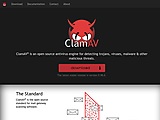
ClamAV is an anti-virus engine, which is commonly used for email and web scanning, or gateway and fileserver securing.
It provides a command-line scanner, a sendmail milter, automatic signature database updates, built-in support for many archiving and container or mail encoding formats, scanning standard ELF and compressed executables, as well as common office document formats.
minor feature: lt;p gt;ClamAV 1.4.2 is a patch release with the following : lt;/p gt;.
lt;ul gt;.
lt;li gt;.
lt;p gt; lt;a href="https://cve.mitre.org/cgi-bin/cvename.cgi?name=CVE-2025-20128" rel="nofollow" gt;CVE-2025-20128 lt;/a gt;: lt;br gt;.
a possible buffer overflow read in the OLE2 file parser that could lt;br gt;
Cause a denial-of-service (DoS) condition. lt;/p gt;
lt;p gt;This was introduced in version 1.0.0 and affects all currently lt;br gt;.
Supported versions. It will be in: lt;/p gt;
lt;ul gt;.
lt;li gt;1.4.2 lt;/li gt;.
lt;li gt;1.0.8 lt;/li gt;.
lt;/ul gt;.
lt;p gt;Thank you to OSS-Fuzz for identifying this. lt;/p gt;.
lt;/li gt;.
lt;/ul gt;.
 GNU GPL c virus-scanner mail-filter security administrators
GNU GPL c virus-scanner mail-filter security administrators
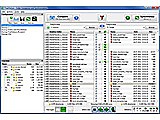
FreeFileSync allows comparing and synchronizing local file folders. It's performant and without GUI complexity. It detects moved and renamed files, detect conflicts, can operate on locked files, understands symlinks, allows automatic syncing, copyies extended file permissions (NTFS), and it's cross-platform.
major bugfix: Dark mode support (Windows 10 20H1, macOS 10.14 (Mojave), Linux)
dock icon progress percentage divergence (macOS)
Prevent "App Napp during comparison/synchronization (macOS)
Enhance EINVAL error message for unsupported characters
Support running with background priority (Linux)
installer access denied when creating shell links (Windows)
Improved size and date formatting for file listing (macOS)
Improved context menu customization grid
Reduced peak memory consumption by 12
Automatically set appropriate text color for config panel background
Revived and updated Italian translation
 GNU GPLv3 synchronization file-management backup version-control mirroring cpp
GNU GPLv3 synchronization file-management backup version-control mirroring cpp

LibreELEC is a minimalist 'Just enough OS' Linux distribution for running Kodi, a software on popular mediacentre hardware, on a Raspberry Pi.
major feature: What's Changed
pvr.zattoo: update 21.0.3-Omega to 21.0.4-Omega by @heitbaum in #9203
le12 Addon updates by @heitbaum in #9212
le12 pvr.plutotv: update 21.3.1-Omega to 21.3.2-Omega by @heitbaum in #9217
peripheral.xarcade: update 21.0.0-Omega to 21.0.1-Omega by @heitbaum in #9220
pvr.iptvsimple: update 21.8.5-Omega to 21.8.6-Omega by @heitbaum in #9230
inputstream.adaptive: update 21.5.2-Omega to 21.5.3-Omega by @heitbaum in #9234
le12 addon updates by @heitbaum in #9241
inputstream.adaptive: update 21.5.3-Omega to 21.5.4-Omega by @heitbaum in #9247
le12 mesa (RPi): add support for new 2712D0 stepping by @HiassofT in #9253
le12 cacert.pem: update to 2024-08-27 by @heitbaum in #9250
le12 iwd: update to 2.20 by @heitbaum in #9252
linux (Rockchip RK3328): pinctrl fix by @heitbaum in #9256
le12 openssl: update to 3.2.3 by @heitbaum in #9263
le12 Revert "cec: Allow cec driver to handle multiple instances" by @HiassofT in #9255
kodi: add backport patch to enable LFE mixing possibility by @HiassofT in #9245
le12 brcmfmac_sdio-firmware-rpi: update to 4c1789e by @HiassofT in #9232
le12 tz: update to 2024b by @heitbaum in #9273
le12 update_adafruit-libraries: drop now removed adafruit-libraries by @heitbaum in #9279
le12 Addon updates by @heitbaum in #9275
le12 Fix flickering with graphic overlays for Rockchip/Allwinner by @NetDwarf in #9277
le12 iwd: update to 2.22 by @heitbaum in #9285
le12 linux (RPi): update to 6.6.50 by @HiassofT in #9292
pvr.iptvsimple: update 21.8.6-Omega to 21.8.7-Omega by @heitbaum in #9302
le12 linux (RPi): update to 6.6.51 by @HiassofT in #9304
le12 podman: update to 5.2.2 and addon (1) by @heitbaum in #9298
le12 vdr-addon: update to 2.7.1 and addon (2) by @heitbaum in #9318
LE12 Allwinner: u-boot: Fix H3 suspend/resume by @jernejsk in #9358
le12 linux (RPi): update to 6.6.54 by @HiassofT in #9360
 Mixed os firmware linux embedded jeos rpi media-center kodi makefile shell python
Mixed os firmware linux embedded jeos rpi media-center kodi makefile shell python
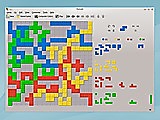
Pentobi is a computer opponent for the board game Blokus.
It supports the game variants Classic, Duo, Trigon, Junior, Nexos, GembloQ and Callisto. Pentobi has different levels of playing strength, a game analysis function and can rate the playing strength of human players. Games can be saved and loaded in Smart Game Format including comments and move variations.
major feature: French translation of the manual. Fixed default window size. Mobile layout is now used by default on devices with small screens.
 GNU GPLv3 c++ game board-game
GNU GPLv3 c++ game board-game









